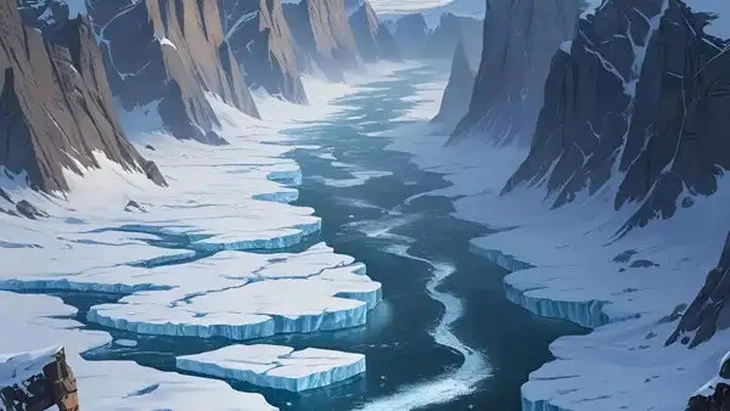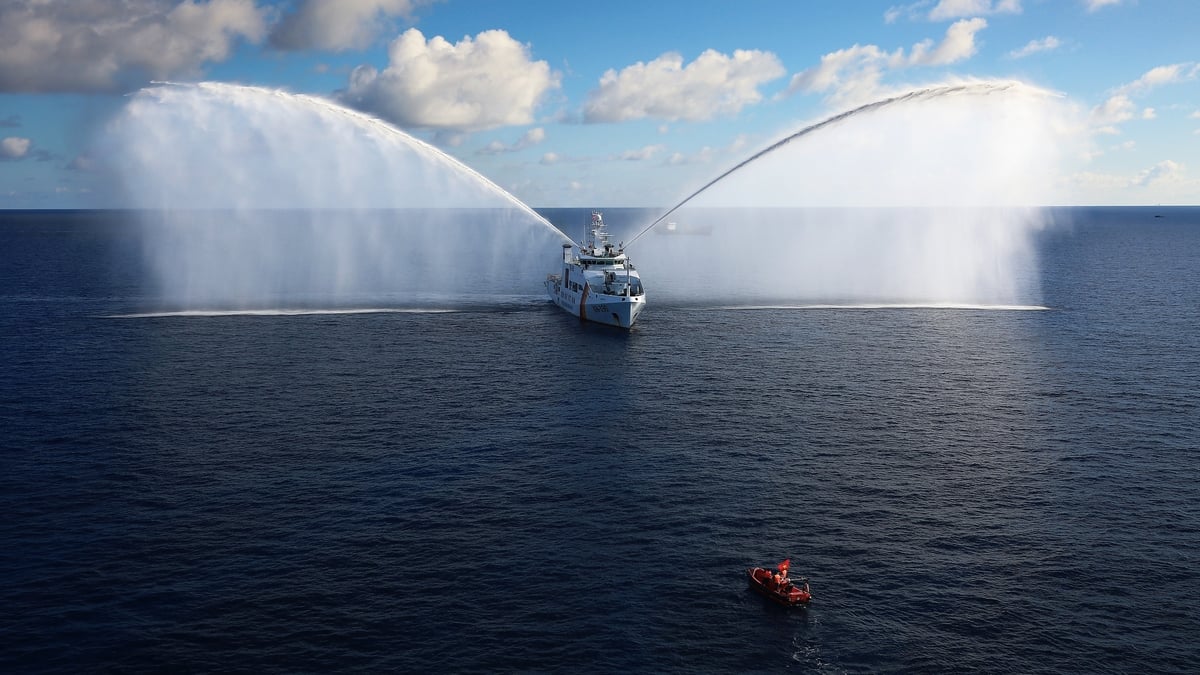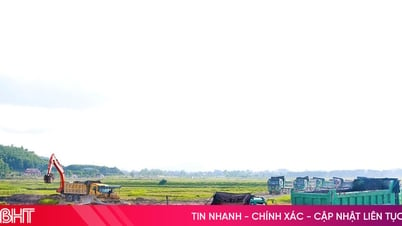
Researchers discover river system buried under nearly 2km of ice in Antarctica - Photo: TIMES OF INDIA
A research team led by Stewart Jamieson at Durham University (UK) has discovered an ancient terrain area equivalent to Wales (about 20,779km 2 - PV). This place was formed by rivers buried under nearly 2km of ice in Antarctica.
Hidden river system under Antarctica
According to the Times of India , scientists discovered this terrain with the help of RADARSAT, a Canadian satellite system. This technology allows them to detect small changes on the ice surface, thereby revealing the shape of the terrain buried below.
The landscape's pristine condition may be due to its extreme age. Preserved under the immense weight of ice, the land has remained unchanged since before the ice age began.
Back then, the continent was part of the supercontinent Gondwana, which it shared with Africa, South America, and Australia. Instead of the icy waters of today, Antarctica had rushing rivers, forests, and dinosaurs. That all changed about 20 million years ago, when glaciers began to form, freezing the region’s entire history under a thick layer of ice.
The East Antarctic Ice Sheet (EAIS) began forming during the Eocene-Oligocene transition, about 34 million years ago, when global temperatures plummeted and CO 2 concentrations fell below a critical threshold.
High elevations such as the Gamburtsev Mountains and the Transantarctic Mountains became the nucleus of ever-expanding ice sheets. Over millions of years, these glaciers gradually coalesced into the giant ice sheet that still exists today.
Protecting fragile ecosystems
Using RADARSAT satellites, scientists have observed subtle changes in the slope of the ice sheet. These tiny clues reveal a hidden, massive landscape carved by rivers millions of years ago, long before the ice sheet itself appeared.
Understanding this ancient environment helps scientists predict how the East Antarctic Ice Sheet (EAIS) might respond in a warming world.
Jamieson's team, whose work is published in the journal Nature Communications , has highlighted the importance of the study to climate science. "Understanding how this giant ice sheet responds to human-caused climate change is of urgent concern," he said.
The discovery also sends a larger message: Earth's past, present and future are deeply connected.
As Scientific American has noted, these buried landscapes are like time machines. By unlocking their mysteries, we can better prepare for the climate challenges ahead, and perhaps help protect the fragile ecosystems that still exist today.
Source: https://tuoitre.vn/phat-hien-he-thong-song-ngoi-34-trieu-nam-an-duoi-nam-cuc-2025061013434234.htm






























































































Comment (0)